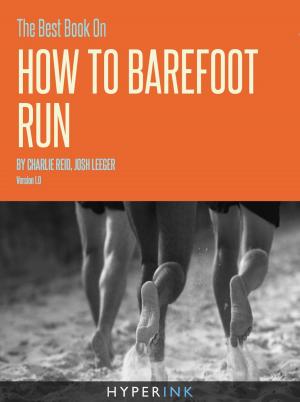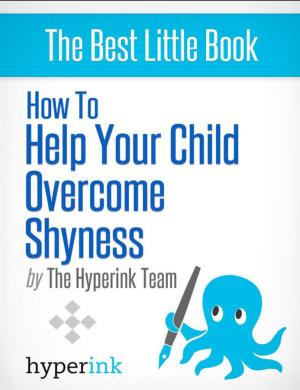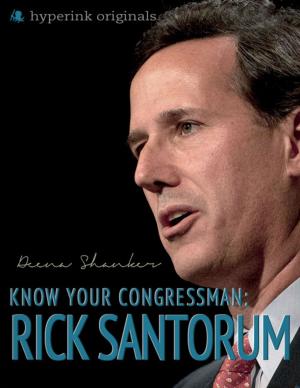| Author: | Gideon Cross | ISBN: | 9781614645238 |
| Publisher: | Hyperink | Publication: | July 30, 2012 |
| Imprint: | Hyperink | Language: | English |
| Author: | Gideon Cross |
| ISBN: | 9781614645238 |
| Publisher: | Hyperink |
| Publication: | July 30, 2012 |
| Imprint: | Hyperink |
| Language: | English |
ABOUT THE BOOK
“I heard the bullets whistle and, believe me, there is something charming in the sound.”
George Washington (age 22), 1754
At the age of 22, George Washington started the French and Indian War.
Young Washington was haughty, almost obsessively status-conscious, and plagued by a foolhardy desire to plunge into the midst of deadly combat. Although he was also characterized by many of the fine qualities modern Americans generally associate with him: bravery, intelligence, and grace under pressure, he could hardly have been called wise, or even prudent, in 1753, when the young surveyor led British troops into disputed territory near modern-day Pittsburgh. Washington’s mission was to approach the French at Fort Duquesne, explain that the territory was technically part of Virginia and, thus, belonged to the British, and demand that the French withdraw.
The first part of the mission went off track when French commander Captain LeGardeur de St. Pierre refused Britain’s ultimatum to abandon the fort. Unable to directly secure Fort Duquesne, Washington led an attack on an unsuspecting French force stationed nearby, killing ten soldiers, including French commander Coulon de Jumonville. Following this battle, Washington’s troop established its own fort, which was known as Fort Necessity.
When Washington was unable to procure military help from the local Indians, he found himself in over his head and hopelessly outmanned by the French military. When the dust settled, Washington had been forced to surrender. The terms of that surrender allowed Washington and his remaining soldiers to return to the Potomac.
That young man who found something charming in the sound of bullets was similarly charmed and captivated by a near obsession with obtaining money, land, and status. Although Washington did copy and memorize the Jesuit book of conduct that is part of the lore surrounding him, he also worried incessantly about dressing and behaving in a manner that would appear sophisticated and gentlemanly, while he constantly planned to expand his property and acquire prime land for himself.
Land ownership was one of the primary ways status was “earned” in the Colonies, and it’s no accident that Washington trained as, and eventually became, a surveyor. In short, he longed to be accepted by the upper classes, to join their ranks, and to develop an entire existence that was in many ways the 18th century equivalent of something a modern-day American might watch on “Lifestyles of the Rich and Famous.”
It is difficult to imagine, in an era more than two millennia removed from the Roman general Cincinnatus, who was the last man to refuse the throne, anyone less likely than young George Washington to buck that selfish trend and change the course of history. Yet, Washington’s transformation from callow youth to wise leader, from selfish social climber to the father of his country, became the key to American independence and the birth of modern democracy.
EXCERPT FROM THE BOOK
On February 22, 1732, George Washington was born into a large, aristocratic Virginia family that had prospered through dealings in timber and tobacco. As was the custom of the times, Washington’s oldest brother, Lawrence, seemed destined for the greatest wealth and highest status among the ten siblings and half siblings. While the Washingtons were certainly comfortable financially, they lacked the land, money, and status of the highest tier of Virginia aristocrats of that time.
When Washington’s father, Augustine, died suddenly, Lawrence decided to take 11-year-old Washington under his wing. Lawrence’s fondness for his young half brother seems to have been a determining factor in Washington’s life; without Lawrence’s support and connections...
...buy the book to continue reading!
ABOUT THE BOOK
“I heard the bullets whistle and, believe me, there is something charming in the sound.”
George Washington (age 22), 1754
At the age of 22, George Washington started the French and Indian War.
Young Washington was haughty, almost obsessively status-conscious, and plagued by a foolhardy desire to plunge into the midst of deadly combat. Although he was also characterized by many of the fine qualities modern Americans generally associate with him: bravery, intelligence, and grace under pressure, he could hardly have been called wise, or even prudent, in 1753, when the young surveyor led British troops into disputed territory near modern-day Pittsburgh. Washington’s mission was to approach the French at Fort Duquesne, explain that the territory was technically part of Virginia and, thus, belonged to the British, and demand that the French withdraw.
The first part of the mission went off track when French commander Captain LeGardeur de St. Pierre refused Britain’s ultimatum to abandon the fort. Unable to directly secure Fort Duquesne, Washington led an attack on an unsuspecting French force stationed nearby, killing ten soldiers, including French commander Coulon de Jumonville. Following this battle, Washington’s troop established its own fort, which was known as Fort Necessity.
When Washington was unable to procure military help from the local Indians, he found himself in over his head and hopelessly outmanned by the French military. When the dust settled, Washington had been forced to surrender. The terms of that surrender allowed Washington and his remaining soldiers to return to the Potomac.
That young man who found something charming in the sound of bullets was similarly charmed and captivated by a near obsession with obtaining money, land, and status. Although Washington did copy and memorize the Jesuit book of conduct that is part of the lore surrounding him, he also worried incessantly about dressing and behaving in a manner that would appear sophisticated and gentlemanly, while he constantly planned to expand his property and acquire prime land for himself.
Land ownership was one of the primary ways status was “earned” in the Colonies, and it’s no accident that Washington trained as, and eventually became, a surveyor. In short, he longed to be accepted by the upper classes, to join their ranks, and to develop an entire existence that was in many ways the 18th century equivalent of something a modern-day American might watch on “Lifestyles of the Rich and Famous.”
It is difficult to imagine, in an era more than two millennia removed from the Roman general Cincinnatus, who was the last man to refuse the throne, anyone less likely than young George Washington to buck that selfish trend and change the course of history. Yet, Washington’s transformation from callow youth to wise leader, from selfish social climber to the father of his country, became the key to American independence and the birth of modern democracy.
EXCERPT FROM THE BOOK
On February 22, 1732, George Washington was born into a large, aristocratic Virginia family that had prospered through dealings in timber and tobacco. As was the custom of the times, Washington’s oldest brother, Lawrence, seemed destined for the greatest wealth and highest status among the ten siblings and half siblings. While the Washingtons were certainly comfortable financially, they lacked the land, money, and status of the highest tier of Virginia aristocrats of that time.
When Washington’s father, Augustine, died suddenly, Lawrence decided to take 11-year-old Washington under his wing. Lawrence’s fondness for his young half brother seems to have been a determining factor in Washington’s life; without Lawrence’s support and connections...
...buy the book to continue reading!















